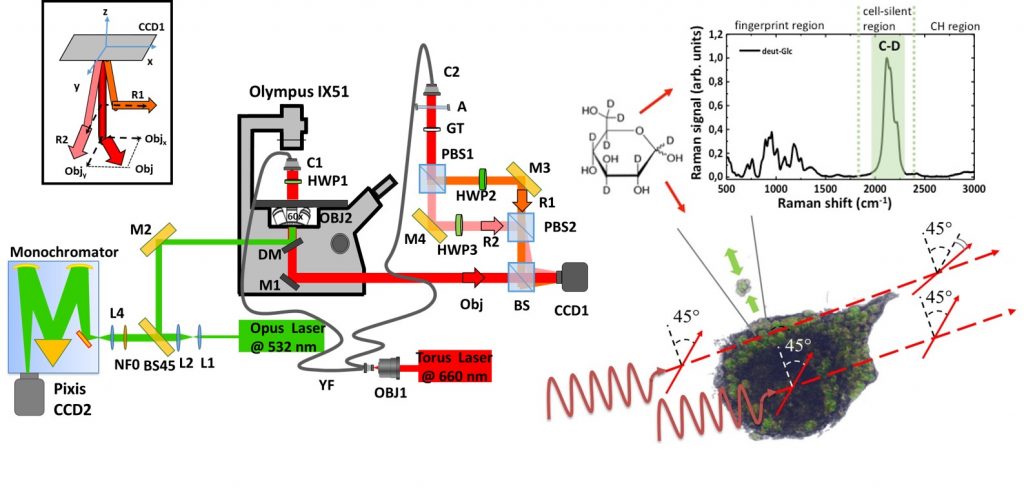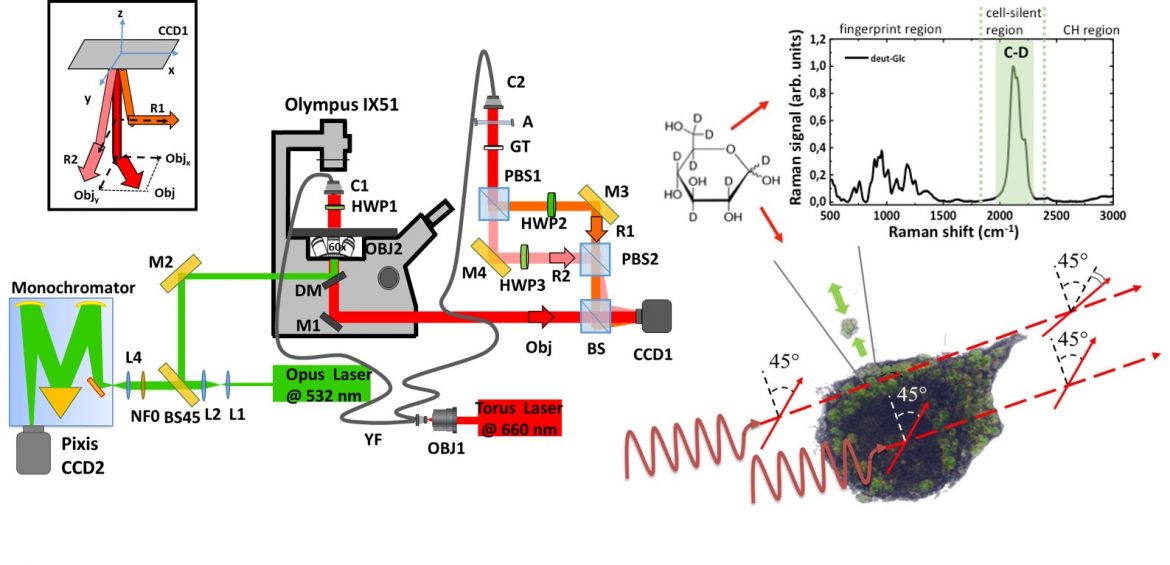A study, born from the collaboration between the IEOS and ISASI institutes of the CNR and published in Frontiers in Bioengineering and Biotechnology, has led to the development of a diagnostic imaging system that allows the identification of tumor cells in the blood through the metabolism of glucose. “Cancer cells have the ability to uptake large amounts of glucose, up to ten times faster than normal cells” explains Alberto Luini, associate researcher of the CNR-IEOS. “Using Raman microscopy, we have shown that the ability of tumor cells to absorb glucose faster leads to the accumulation of lipids in the form of droplets, unlike what happens, for example, with leukocytes, healthy blood cells. This provides us with a reliable parameter for distinguishing cancer cells from blood cells”, says Anna Chiara De Luca, researcher at the CNR-IEOS. “To detect lipid droplets in timescales similar to a rapid screening, we combined Raman microscopy with polarization sensitive digital holographic imaging (PSDHI). This imaging technique allows to identify the morphology of the cells and to map the birefringent pattern of the lipid droplets. We were thus able to distinguish CTCs from leukocytes in a few seconds, with near 100% accuracy”, reveals Maria Antonietta Ferrara, researcher at the CNR-ISASI. “The detection and quantification of cancer cells using this combined system lays the foundation for the development of a new, simple and universally applicable method of cancer cell isolation. Furthermore, the collection and in vitro culture of CTCs allows us to examine their genetic and biochemical characteristics and evaluate their sensitivity to specific drugs”, says Giuseppe Coppola, CNR-ISASI researcher.

Spettro Raman del glucosio deuterato (deut-Glc). Il segnale CD può essere utilizzato per visualizzare l’assorbimento di glucosio e la formazione di goccioline lipidiche nelle cellule tumorali. Un cambiamento nella polarizzazione della luce si osserva solo in corrispondenza delle goccioline lipidiche, a causa della dispersione rotatoria ottica di queste microstrutture.
Read the news on the CNR website:

